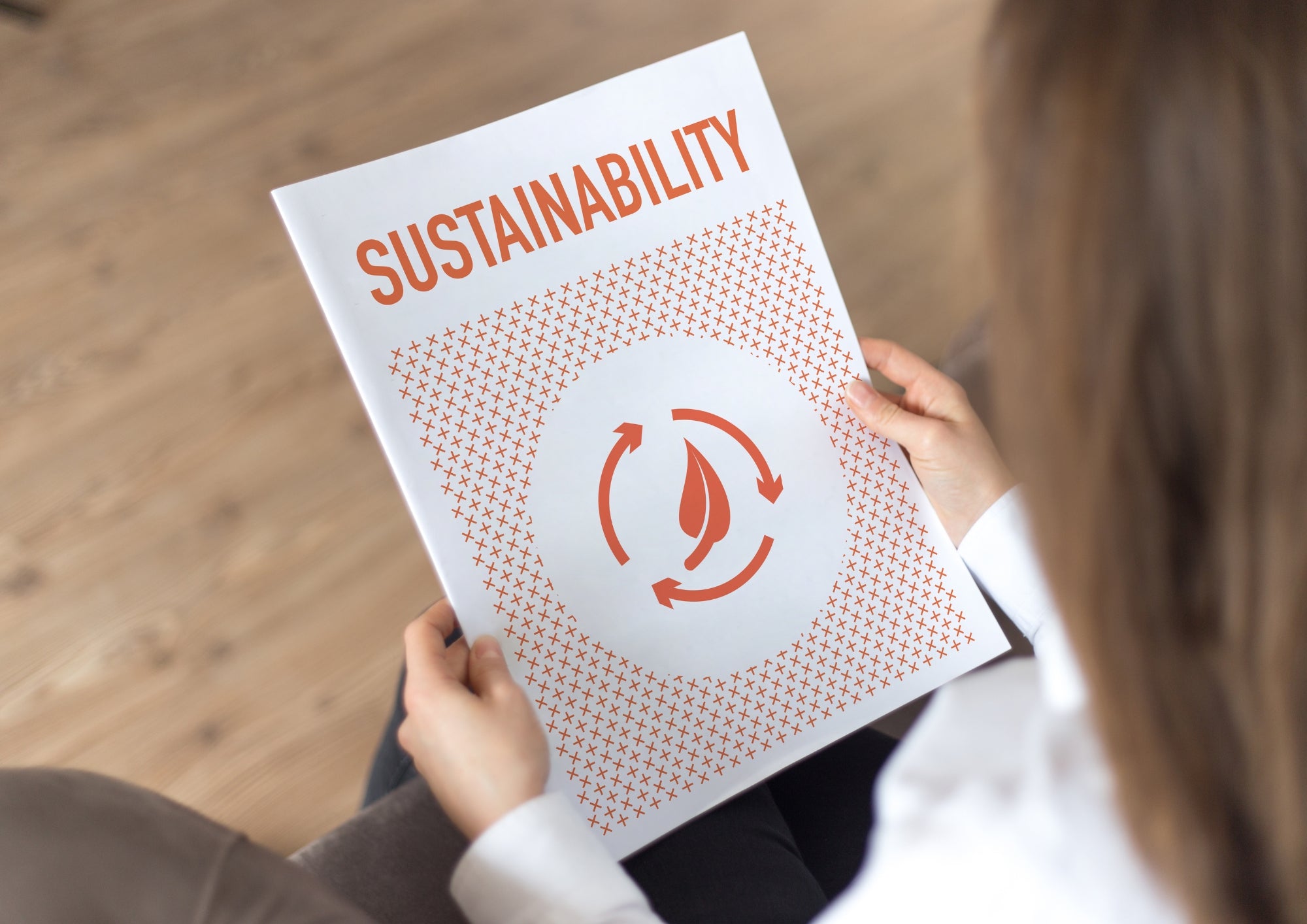Why using sustainably sourced collagen is actually better for your skin, as well as the planet
In recent years, collagen has become a nutricosmetic staple in most households, and why not? Collagen makes up 80% of human skin and works with the protein elastin to keep our skin elastic and taut (it’s found in our skin, joints, ligaments and even veins, teeth, bones and eyeballs).
As our bodies age, natural collagen production slows, leading to wrinkles and lines, making taking a collagen supplement a no-brainer.
Seven years ago, when I formed My Beauty Luv, I knew collagen was starting to make itself known in the American and European markets. Still, only a handful of brands had collagen-based products. Today, the collagen industry is estimated to be worth more than $4 billion a year.
In my quest to supply the best quality, ingestible beauty products, I quickly realised that not all collagen is created equal. It’s an issue of quality, and a lot of that has to do with where the collagen is sourced from.
What type of collagen do you need?
As of 2011, around 28 types of collagen have been identified in the human body, all serving different purposes. The main types are called Type I, II, III, IV, V, and X – you can read more about the various types and where they are found on my blog. Regarding nutricosmetics, we focus on a handful.
As collagen is essentially a bunch of amino acids mixed up in varying ratios – taking different collagens for a range of issues or ‘problems’ is a safe bet. Generally, Type I is the most widespread, making up 80% of all collagen products on the shelves.
Where does collagen come from?
As we age and our collagen production decreases, we must look for external sources to supplement it. Collagen is an animal-derived product – generally bovine, porcine, or fish. Considering that the extraction of collagen from animals is a byproduct of an existing industry, it’s a great (waste not, want not) situation, right? Well, that depends.
The problem with bovine collagen
The Bureau of Investigative Journalism has published several articles exploring the link between multinational companies sourcing collagen from Brazilian cattle farms, which it claims is responsible for 2 600 square km of forest loss.
The article continues, “As a so-called by-product of the cattle industry, collagen is not subject to the same traceability and responsible sourcing standards as other products linked to deforestation. However, the cattle industry is responsible for 80% of tropical forest loss in Brazil, and non-meat products can account for up to a quarter of meatpackers’ incomes. Campaigners say by-products are a vital part of the business model”.
What I discovered
During my research, I realised that the bulk of collagen products derived from cattle available in South Africa are imported from South America. I’m by no means saying that all of these products result from deforestation; I am saying that we, as consumers, need to do a lot of digging to ensure that the products we buy are not.
We source bovine collagen from the prized livestock of the proud herdsmen within Inner Mongolia – an area steeped in a rich, centuries-old tradition. The local government implements rigorous spiritual, sustainable and regenerative farming practices to preserve the history and embedded culture of the region.
The benefits of sustainable, humane sourcing
The rich grazing conditions allow for superior collagen with a slightly different amino acid profile from other common hydrolysed collagens today, with higher levels of glycine, proline, alanine, and hydroxyproline being measured. The molecular weight of our bovine Himalayan Collagen is also unique – at only 920 Da, making it the lowest in the bovine category. This means its bio-availability and absorption in the body is extremely high.
So, what about fish?
While bovine collagen, when ethically sourced, is an excellent option, there’s a lot of exciting research about fish collagen (marine and freshwater). An article published in the American National Library of Medicine states that marine collagen and collagen peptides (minute pieces of protein from animal collagen) are increasingly used because they are biocompatible, bioavailable, and safe, as there is no risk of transmissible disease.
Global Market Insights reveals that the market for fish collagen peptides was worth $750 million in 2022 and is predicted to continue growing, given increasing consumption among younger populations due to high protein content, anti-ageing properties, and other benefits.
Collagen derived from fish scales has shown promising results in various biomedical applications, including wound dressings and tissue engineering. These fish scale-based materials can provide a scaffold for cell growth and promote tissue regeneration.
Fish collagen is a pure protein with no fat or carbohydrate to dilute its impact. In addition, more than any other amino acid, the amino acid building block, proline, is needed for whole-body protein synthesis. Therefore, fish collagen’s proline content may also help increase lean body mass.
Additionally, using fish collagen avoids the issue of deforestation.
Where’s the catch?
Oceanic aquaculture is a growing industry; in fact, the US National Oceanic and Atmospheric Administration states that farmed seafood products already make up half of the world’s seafood supply. The Food and Agriculture Organization of the United Nations estimates that aquaculture will grow to over 62% of the worldwide fish protein supply by 2030. This is excellent news in terms of avoiding overfishing our oceans and rivers. Still, as with cattle ranches, not all fish farms (whether they be freshwater or oceanic) are equally sustainable.
Aquaculture comes in multiple versions, two of which are open systems versus closed systems. Open systems, often used for oceanic aquaculture, allow unchecked interactions between the farmed fish and the surrounding environment, which causes the following problems:
- Overcrowding, which leads to psychological and physical distress, often necessitating the use of antibiotics,
- The escape of farmed fish from ocean cages, which can have detrimental effects on wild fish populations through competition and interbreeding,
- The spread of parasites and diseases between wild and farmed fish,
- Marine predators are drawn to the farms, getting stuck in nets, eating contaminated fish (in some cases), and damaging the cages, allowing the farmed fish to escape,
- The use of wild pelagic fish for feeds can diminish or deplete the low end of the marine food web in specific locations,
- In an article published by Marine Ecology entitled ‘Temporal variability in predator presence around a fin fish farm in the Northwestern Mediterranean Sea’, researchers discovered that Bottlenose dolphins became reliant on the ‘easy’ prey, increasingly being drawn to the fish farms, and even teaching their young these habits. The result is a concerning alteration in behaviour that puts the animals at risk whilst also making them targets of companies seeking to protect their product,
- Nutrient and chemical effluent discharge from farms pollutes the marine environment.
To give you an idea, Just Economics released a report entitled Dead Loss on behalf of the Changing Markets Foundation campaigning organisation, exploring the salmon farming industry in Canada, Norway and Chile, some of the biggest global producers. The report found that of the costs associated with fish farming, about 60% were borne by the producers, especially in the form of fish mortality and the cost of treating sea lice. Notably, about 40% of the costs were borne by broader society, for instance, in pollution, loss of fish populations and impacts on the climate crisis.
Without a doubt, I prefer sourcing fresh water over marine collagen due to the improved sustainability and regenerative farming practices, particularly in the Hubei province, where our Pure Fish Collagen is sourced.
Our Tilapia fish are fresh-water farmed using extremely advanced organic, regenerative and sustainable practices – ensuring complete environmental integrity. The area where these fish are farmed is the oldest fresh-water aquaculture region in the world, dating back to over 1 000 BC - making this area the most advanced in the world today.
What you’re getting when you focus on sustainability
Due to the exceptional and favourable conditions, the end product is our exclusive Pure Fish Collagen, one of the purest and highest-grade type 1 collagens, with an unsurpassed low molecular weight and a superior amino acid profile.
This unpolluted and natural farming also yields collagen with the highest glycine content out of all collagens today.
Is going vegan an option?
The short answer is not yet. Collagen comes from animals, making it unsuitable for a strict vegan lifestyle. However, as reported in Medical News Today, scientists are developing techniques to use genetically engineered microorganisms such as yeast to make recombinant human collagen, which people could describe as vegan collagen.
I’ve been looking into ‘vegan’ collagen and have one of the first patented vegan collagens (made from yeast bacteria), which I will launch soon.
It pays to care
If you’re serious about skin health, it pays to do your research; animals treated well and living in ecologically healthy environments provide better collagen. It’s that simple.





